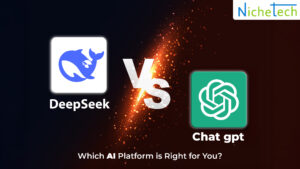Introduction
The on-demand business model has revolutionized various industries, from transportation to healthcare, by providing instant access to services. With the rise of smart applications, IT industries are undergoing a significant transformation. These smart apps leverage artificial intelligence (AI), cloud computing, and big data to enhance user experience and operational efficiency.
The Evolution of On-Demand Services
On-demand businesses have flourished in recent years, driven by increasing consumer expectations for convenience, speed, and personalization. Companies like Uber, Airbnb, and Instacart have set new standards for service delivery. The IT industry is playing a pivotal role in ensuring that businesses can develop and maintain smart applications that cater to evolving market demands.
Key Trends Reshaping the IT Industry
1. Cloud-Based Infrastructure
The shift towards cloud computing allows on-demand applications to scale dynamically. Businesses can efficiently manage their operations without investing heavily in physical infrastructure. Platforms like AWS, Microsoft Azure, and Google Cloud provide scalable and secure solutions for app development.
2. AI and Machine Learning Integration
Smart apps use AI-driven analytics to personalize user experiences. Machine learning algorithms enable predictive analysis, helping businesses offer better recommendations, automate customer service, and optimize logistics.
3. Enhanced Cybersecurity Measures
With the increase in digital transactions, cybersecurity has become a major concern. IT firms are incorporating advanced encryption techniques, biometric authentication, and blockchain technology to secure user data.
4. Mobile-First Approach
Smartphones have become the primary interface for on-demand services. IT industries are focusing on mobile app development with responsive UI/UX designs, real-time tracking features, and seamless payment integrations.
5. API Economy and Microservices Architecture
The use of APIs (Application Programming Interfaces) enables businesses to integrate third-party services seamlessly. Microservices architecture enhances the scalability and flexibility of smart apps, making them more adaptive to future advancements.
6. 5G and Edge Computing
Faster internet speeds with 5G and edge computing are enabling real-time data processing, reducing latency issues in on-demand services. This is particularly beneficial for sectors like healthcare, gaming, and IoT-based applications.
Impact on Various Sectors
Healthcare: Telemedicine apps provide instant access to doctors and medical consultations.
E-commerce: On-demand delivery apps ensure quick product dispatch and tracking.
Finance: Fintech apps offer instant loans, digital wallets, and real-time financial insights.
Education: E-learning platforms provide on-demand courses with AI-driven recommendations.







